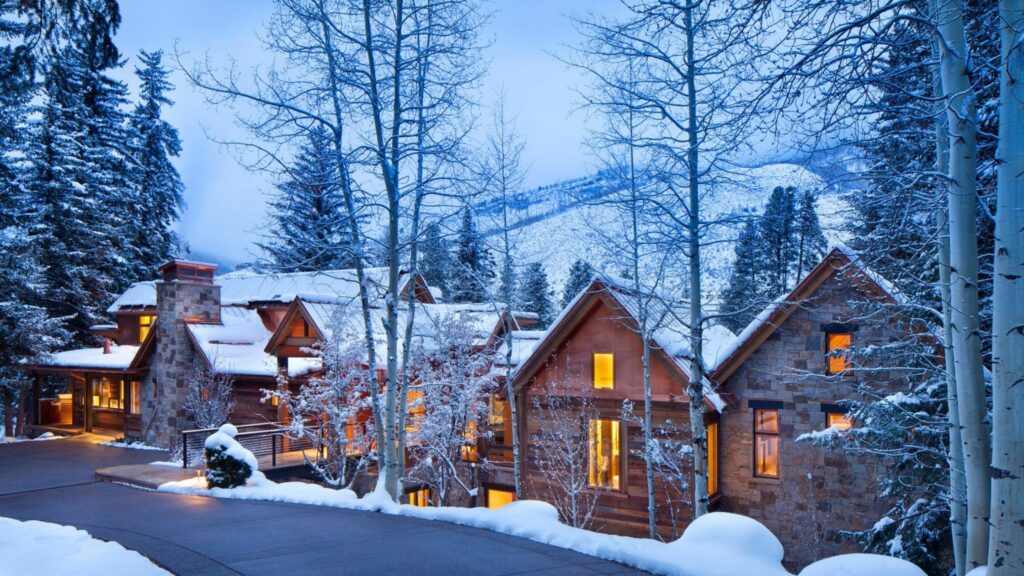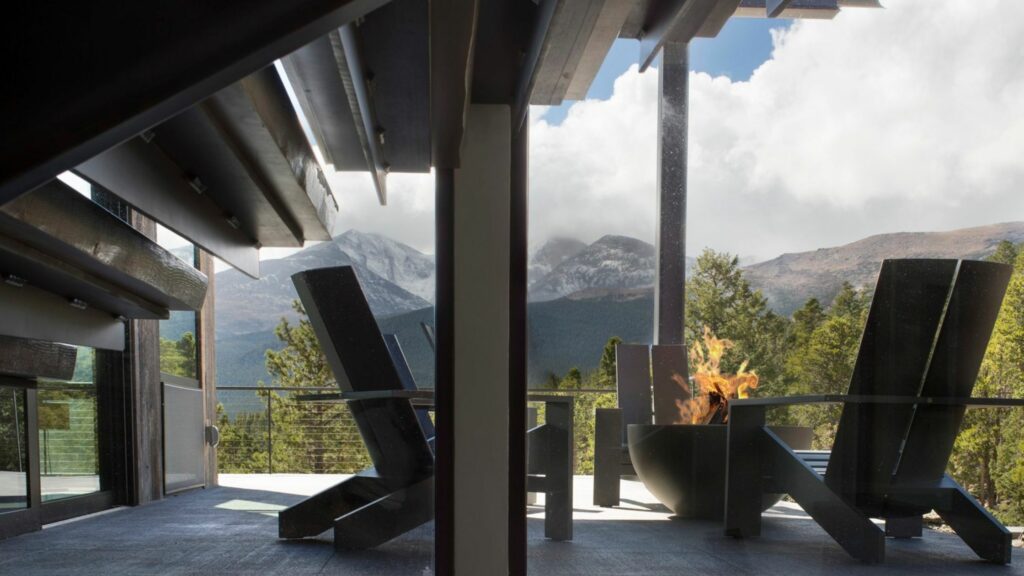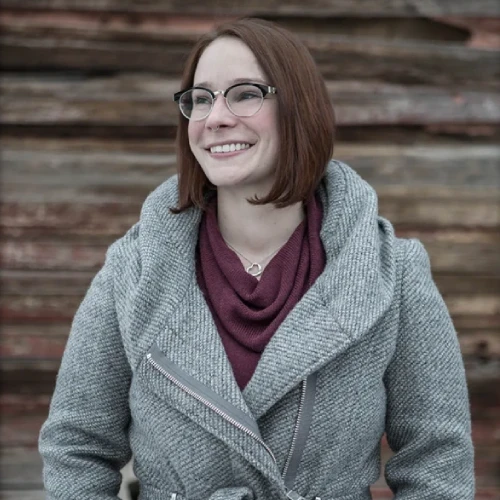Mountain-style landscaping is more than just a design choice. It’s a way to connect with the natural beauty of your surroundings. By using local materials and native plants, you’re not just creating an organic look but also fostering a deeper connection with the mountains.
Mountain landscaping can fit any space, whether a sprawling backyard or a cozy city garden. Interestingly, mountains host about a quarter of the Earth’s land biodiversity, making them a rich source of inspiration. By integrating elements of mountain life into your landscaping, you can enjoy a piece of this natural beauty right at home. Incorporating principles of residential architecture can enhance your outdoor space’s functionality and aesthetic appeal. Dive into these mountain landscaping ideas and start crafting your outdoor haven.
Combining Visual Appeal and Practical Use

Balancing aesthetics and functionality in mountain landscaping requires a thoughtful design and material selection approach. The unique challenges mountainous terrain presents—steep slopes, rocky soil, extreme hazards, and harsh weather conditions—necessitate innovative solutions that marry beauty with practicality. When planning a mountain landscape, it is essential to consider plant selection, hardscaping elements, and sustainable practices that will thrive in an elevated environment.
A well-designed landscape can transform a mountain property into a visually stunning, sustainable, and usable space by balancing aesthetics and functionality. This harmonious approach ensures that the landscape is not only an extension of the home’s living area but also a respectful nod to the beauty and integrity of the natural environment.
Creative Landscape Ideas for Mountain Homes
Essentials of Natural Mountain Landscaping
Mountain landscapes often evoke images of rugged terrain, diverse plant life, and serene beauty. To replicate this in your yard, incorporate natural elements like stones, boulders, and organic lines. Avoid sharp corners and artificial materials that disrupt the natural flow. Pathways made of natural stone or wood walkways can wind through the space, guiding visitors on a journey. Garden sculptures, water features, stone benches, and wooden harbors can be focal points, creating interest and harmony with the surroundings.
Incorporating Native Plants and Trees
Native plants and trees are vital in mountain-style landscaping. Choose species that thrive in your region’s climate, ensuring minimal maintenance. Consider shrubs like willow, blueberry, huckleberry, or rabbit bush for various textures and colors for multiple textures and colors. Sun-loving perennials such as goldenrod, sunflower, and daisies add vibrant, drought-tolerant hues. Quaking aspens and other trees can create shade and visual interest year-round. These plants support local wildlife, reduce the need for water, and blend seamlessly with natural surroundings.
Utilizing Rocks and Boulders
Rocks and boulders bring authenticity to mountain landscaping. They add structure and visual interest to your yard. Use them to create retaining walls, pathways, or focal points. Mimicking natural formation: boulders are placed irregularly rather than in straight lines. Incorporate various sizes and shapes for a more organic feel. Select local stones to blend with the surroundings and minimize transportation impact.
Integrating Mountain-Style Hardscaping

Hardscaping elements like stone patios, fire pits, and outdoor structures can define functional areas. Stone patios extend living spaces, offering spots for dining or relaxation. Fire pits create inviting gathering spots, ideal for cool mountain evenings. Align these elements with the natural terrain, preserving views and the natural flow of the landscape. Use materials like stone or wood to maintain a cohesive and natural look.
Creating Interest with Texture
When it comes to mountain landscaping, one of the most compelling strategies is to delight with texture. Landscaping textures involves using plants, rocks, and other materials to create visual and tactile interest. This technique is particularly effective in mountain settings, where the natural landscape is already quite dramatic. Utilizing a variety of textures can not only enhance the aesthetic appeal but also add depth and dimension to your outdoor space.
In conclusion, delighting with texture in mountain landscaping involves carefully selecting and placing plants, rocks, and hardscape elements to create a cohesive, visually stimulating environment. By blending various textures, you can mirror the natural beauty of the mountains and craft a landscape that is as inviting as it is beautiful.
Introducing Layered Elements
The strategic addition of layers can create depth and visual interest in a mountain landscape design. Layering in landscaping involves arranging plants of varying heights, textures, and colors to mirror the natural progression of mountain terrain. This method enhances aesthetic appeal and improves the ecological balance by providing diverse wildlife habitats and enhancing soil water retention.
By thoughtfully adding layers to your mountain landscape, you create a multifaceted environment that not only pleases the eye but also maintains the mountainous terrain’s integrity and natural beauty. This method allows for a harmonious blend between the cultivated areas and the wild, rugged nature often found in these high-altitude ecosystems.
Adding Water Features to Mountain Landscapes
Adding water features like streams and waterfalls can create a soothing and natural atmosphere in mountain landscapes. You can choose from a variety of options:
- Ponds: These can range from small decorative ponds to larger bodies of water that support fish and aquatic plants.
- Waterfalls: Cascading waterfalls, reminiscent of natural falls found in mountain settings, can add a dynamic element to your yard.
- Fountains: Fountains offer a more controlled and structured water feature, suitable for front and backyards.
- Birdbaths: Simple yet effective, birdbaths attract wildlife and add a tranquil element to your landscape.
Each type mirrors natural elements and connects the outdoor area with its mountain surroundings.
Conclusion
Mountain landscaping offers a unique blend of beauty and functionality. By incorporating local materials and native plants, anyone can transform their yard into a serene retreat. Features like rock pathways, garden sculptures, and water elements enhance the natural charm while supporting local ecosystems. Strategic layouts maximize views and create a seamless transition from home to nature. Incorporating modern ranch house exterior elements can enhance this blend, adding a contemporary touch to the natural surroundings. Embracing these mountain home landscaping ideas elevates the aesthetic appeal of outdoor spaces and fosters a deeper connection with the environment.
